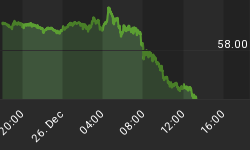With a market cap of over $23 billion, Ripple (XRP) is one cryptocurrency that’s on a definitive tear--price volatility aside--and a string of deals with major mainstream players is cementing its rise.
This isn’t just about the XRP crypto coin, either. It’s much bigger than that. Ripple’s underlying blockchain is bulldozing its way through the banking sector and shows no sign of slowing down.
Last week, giant Santander became the first major bank to actually say it was preparing to roll out an international money transfer app for cross-border payments via blockchain, in partnership with Ripple.
“This spring, if no one beats us to it, we will be the first large retail bank to carry out cross-border payments at scale with blockchain technology,” Santander’s UK CEO Nathan Bostock said, according to Business Insider.
And an even bigger vote of confidence is coming with news that Western Union is trialing Ripple blockchain to enable the more efficient transfer of assets between its branches.
“We are looking especially in the processing settlement and working capital optimization, also in the regulation part, on the compliance part on the blockchain capabilities,” Western Union CEO Hikmet Ersek said on a conference call after the company reported results Tuesday. “And we do test, we do have some tests with Ripple.”
Ripple also pulled off a major coup late last year when American Express introduced instant blockchain-based payments using Ripple, making it possible for U.S. corporate customers to send funds to U.K.-based business banking with Santander U.K.
That was a landmark deal that represented a key move forward for blockchain technology.
“American Express has a long history of integrating new technologies,” Amex chief information officer Marc Gordon said in a statement. “This collaboration with Ripple and Santander represents the next step forward on our blockchain journey, evolving the way we move money around the world.”
In terms of cryptocurrency-mainstream partnerships, it doesn’t get much bigger than this, but it does get wider. Ripple’s main focus is blockchain-based cross-border payments, and as of the third quarter of last year, Ripple had licensed its blockchain technology to over 100 banks.
Ripple is backed by other major players, too, including Standard Chartered, Accenture and SBI Holdings. Related: Gold Will Be The Biggest Winner Of The Trade War
In the meantime, Ripple’s digital currency, XRP, is feeling the heat, just like every other cryptocurrency. It’s third among the cryptocurrencies, behind Bitcoin and Ethereum,
In an interview with Fortune’s ‘The Ledger’, Ripple CEO Brad Garlinghouse suggested that the company’s contrarian view is a sort of bridge between the ultra-libertarian elements of the crypto world on one side and the banking sector and the government on the other.
Ripple, he said, isn’t anti-bank, anti-government or anti-fiat currency. And in a world where “there isn’t going to be one crypto to rule them all”, we can now see cryptos settling into their niches.
For ethereum, that niche is smart contracts, while bitcoin is increasingly becoming an actual “store of value”, according to the Ripple CEO.
For Ripple, that niche is payment problems—and banks have plenty of them. Most notably, Garlinghouse said, Ripple can help banks solve liquidity problems.
“You can use digital assets to fund liquidity, and Ripple is uniquely positioned to capitalize on that. Bitcoin takes four hours to settle a transaction. XRP takes 3.6 seconds,” he said.
The market isn’t really responding to Ripple’s leaps and bounds, though. But it may be time to start recognizing this specific crypto niche the coin has carved out for itself. Banks are already lining up.
By Michael Kern for Safehaven.com
More Top Reads From Safehaven.com:

















